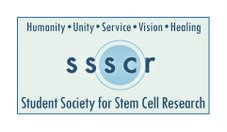Frog legs give leg up to limb replacement
Richard Dooley, Canwest News Service
Published: Monday, August 18, 2008
HALIFAX -- New research on amphibians could soon give researchers a
leg up on how limbs develop in a host of organisms, and one day lead
to techniques to repair injuries in humans.
Dalhousie post-doctoral researcher Ryan Kerney's work in figuring out
how a frog found in Puerto Rico's rainforests develops its limbs has
just been published in the journal Evolution and Development.
The emerging field of regenerative medicine is watching this type of
research closely hoping to understand how limb development findings
could be applied to humans. Regenerative medicine looks at how stem
cells can be used to regrow missing structures or guide in the
development of structures within an organism.
Kerney, who did his frog research while working in the Harvard
University biology lab of James Hanken, discovered the frog
Eleutherodactylus coqui -- E. coqui for short -- doesn't develop
limbs in the way biologists have always thought.
Scientists are still trying to work out the mechanism of limb
development, but the order has always been thought to be understood --
most limbed animals develop arms and legs the same way, growing
upper limb parts first before moving on to the development of fingers
and toes.
Not so with E. coqui.
Kerney is interested in how the frog embryos develop the distant limb
parts before growing upper limb bones.
"This could have a bearing on models of limb development,
said from his lab in Halifax.
Understanding how limbs develop -- and why they develop differently
in some amphibians -- is key to mapping the genetic template for cell
development and understanding what switches on and off the cells that
make the parts of limbs.
That knowledge would go a long way toward understanding how to repair
injured tissue in humans.
"Understanding more about amphibian limb development will help things
like regenerative medicine," Kerney said.
Now, Kerney is turning his attention to the limb development of the
common Eastern Red Back Salamander, which is found throughout eastern
North America.
Shifting attention to the salamanders could deepen science's
understanding of its ability to regrow limbs and tails lost to
predation or the process that leads to its ability to breathe through
its skin.
Redback salamander adults have vestigial lungs that don't function,
but scientists want to understand how the salamander's DNA switches
lung development off.
"There is now a tremendous amount of research underway trying to
understand how cells talk to one another," Kerney said.
In May, another researcher, Francesca Mariani at the University of
Southern California Keck School of Medicine, published her findings
about the development of mammalian embryonic limbs in the scientific
journal Nature.
Mariani discovered "instructive" molecules on the far end of
developing limbs that controls the pattern of bone development along
the length of the limb.
© The Leader-Post (Regina) 2008
http://www.canada.
850b-42b0-8bba-
«¤»¥«¤»§«¤»¥«¤»§«¤»¥«¤»«¤»¥«¤»§«¤»¥«¤»§«¤»¥«
¯¯¯¯¯¯¯¯¯¯¯¯¯¯¯¯¯¯¯¯¯¯¯¯¯¯¯¯¯¯¯¯¯¯¯¯¯¯¯¯¯¯¯¯
StemCells subscribers may also be interested in these sites:
Children's Neurobiological Solutions
http://www.CNSfoundation.org/
Cord Blood Registry
http://www.CordBlood.com/at.cgi?a=150123
The CNS Healing Group
http://groups.yahoo.com/group/CNS_Healing
____________________________________________
«¤»¥«¤»§«¤»¥«¤»§«¤»¥«¤»«¤»¥«¤»§«¤»¥«¤»§«¤»¥«
¯¯¯¯¯¯¯¯¯¯¯¯¯¯¯¯¯¯¯¯¯¯¯¯¯¯¯¯¯¯¯¯¯¯¯¯¯¯¯¯¯¯¯¯
Change settings via the Web (Yahoo! ID required)
Change settings via email: Switch delivery to Daily Digest | Switch format to Traditional
Visit Your Group | Yahoo! Groups Terms of Use | Unsubscribe
__,_._,___










